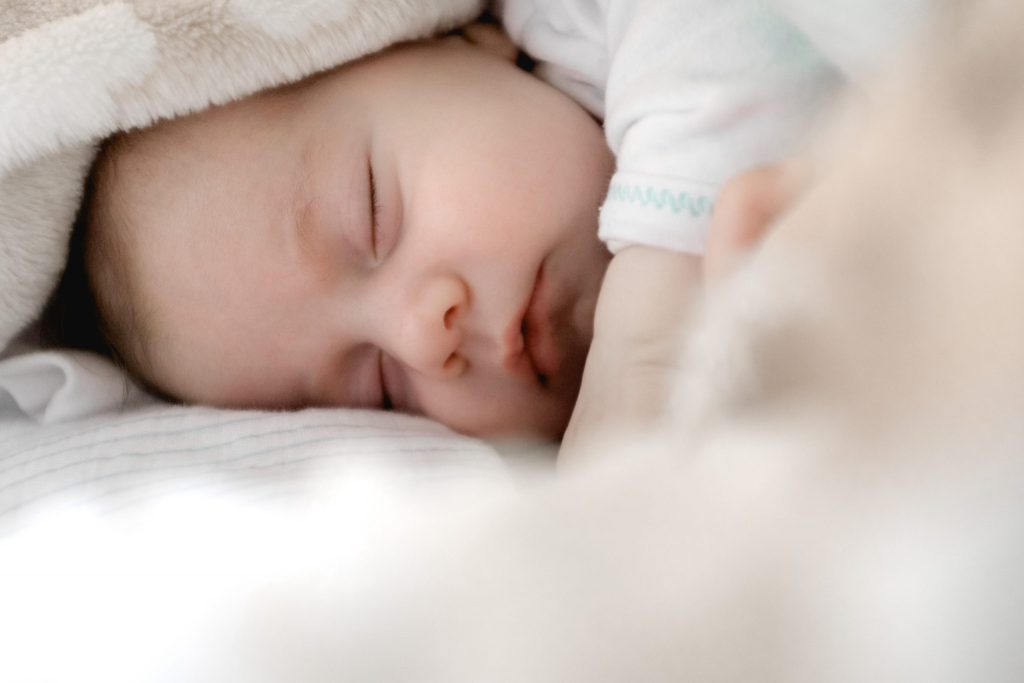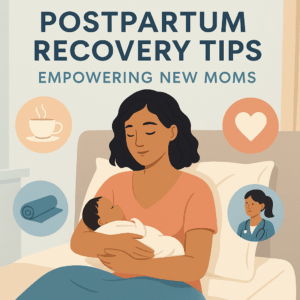What You Need to Know About Co-Sleeping or Bed-Sharing

Did you know that September is Baby Safety Month and NICU Awareness Month? In honor of that, we’re talking about co-sleeping and bed-sharing. What are they exactly? Are these sleeping arrangements ever safe? What are the pros and cons of each practice?
Just as different methods of sleep training can spark passion and controversy in the parent community, so can the topics of co-sleeping and bed-sharing. Don’t worry, mama. We’re here to break down what you need to know about both practices here.
What is the difference between co-sleeping and bed-sharing?
You might have heard these two terms used interchangeably to describe the same thing, but they’re actually different sleeping arrangements.
Co-sleeping is when you share a room with your baby, but you sleep on separate surfaces. It might also be described as “room-sharing.” For example, you and your partner may sleep in your own bed in your own room, while your baby sleeps in a bassinet or crib in that room too.
In comparison, bed-sharing is what it sounds like: the infant or child sleeps in the same bed with their parents.
The pros and cons of co-sleeping
Co-sleeping has many benefits for many different mothers. When you’re in the same room as your baby, you can easily check on her, soothe her, or feed her during the night. The nighttime routine can be a lot easier for parents when their baby is nearby in the same room. Plus, sharing the same room can reduce the risk of Sudden Infant Death Syndrome (SIDS) by up to 50%. The American Academy of Pediatrics (AAP) recommends that babies share a bedroom with their parents for at least the first 6 months, if not the first year, because of these benefits.
While co-sleeping clearly has its perks, that doesn’t mean it’s for everyone. A separate study found that when parents and baby share a room together, neither party sleeps as well. “Early independent sleepers,” or babies who slept in their own bedroom before 4 months, slept longer and for longer stretches that babies who co-slept. When you’re a sleep-deprived parent, this can be a huge factor in deciding whether or not you want to co-sleep.
The pros and cons of bed-sharing
Bed-sharing is a hot topic. Ask someone “is bed-sharing with your baby okay?” and you may get intense rejection, wariness, or uncertainty. Remember that bed-sharing is even common in cultures other than our Western society. Many mothers around the world wouldn’t think twice about bed-sharing; in fact, they may think that separating babies and kids for sleep is neglectful and unnatural.
In other cultures where it’s hotter, pillows and blankets may not be used, eliminating the risk of suffocation. Or people may sleep on or very close to the ground with minimal furniture, eliminating the risk of falling off a mattress or getting stuck. It is important to note that bed-sharing can be dangerous in Western cultures because of our general sleep preferences and habits. If you share the same bed with your baby, he can get trapped by the bedframe, between the bed and wall or other furniture, or by falling off the bed. He can also be suffocated by pillows and linens, or by having someone else roll on top of him.
AAP as well as the U.S. Consumer Product Safety Commission (CPSC) advise against bed-sharing.
Do it safely
If you do choose to bed-share or co-sleep with your baby, remember the following safety precautions.
- Always place her on her back to reduce the risk of SIDS.
- Soft surfaces, pillows, quilts, and blankets shouldn’t be used for your baby’s sleep surface.
- Watch for safety hazards like blinds, draperies, loose bed linens, and gaps or tight spaces in furniture.
- Don’t cover your child’s head while sleeping, such as with a knit cap or beanie.
- Dress your child appropriately for the weather to avoid overheating.
- Do not use medicines, alcohol, or drugs that can affect your sleep or waking ability.
Remember that every family’s needs and sleeping habits are different. You have the power to decide the best sleeping arrangement for you and baby. Be sure to research safe practices that will allow you and your baby to get good, healthy sleep.



